How to Grow and Care for Soybeans: Expert Tips for Luxurious Growth
- May 9, 2024
- 0 comment
Discover expert tips on how to grow and care for soybeans to achieve luxurious growth. This guide covers everything from soil preparation to harvesting, ensuring you can cultivate healthy and productive soybean plants efficiently.
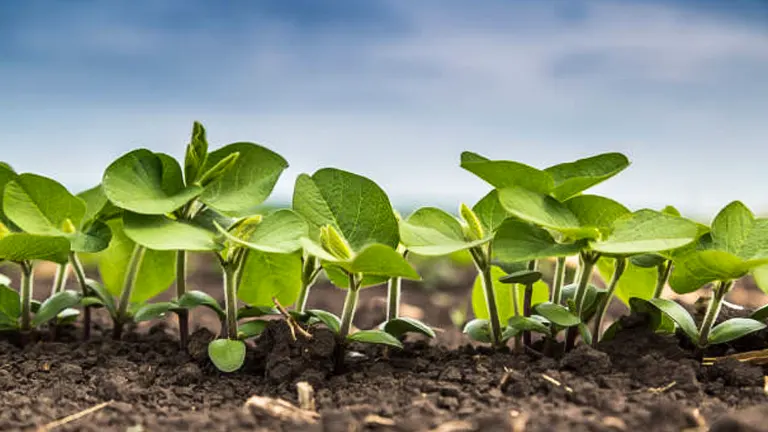
Whether you’re aiming for a small personal batch or a larger agricultural endeavor, our strategies are designed to enhance your yield and ensure successful cultivation. Dive into effective soybean farming practices and reap the benefits of your hard work!
Table of Contents
- Understanding Soybeans
- Pre-Planting Preparation
- Planting Soybeans
- Care and Maintenance
- Harvesting and Storage
- Troubleshooting Common Problems
- Conclusion
- FAQs
Understanding Soybeans
The Soybean Plant
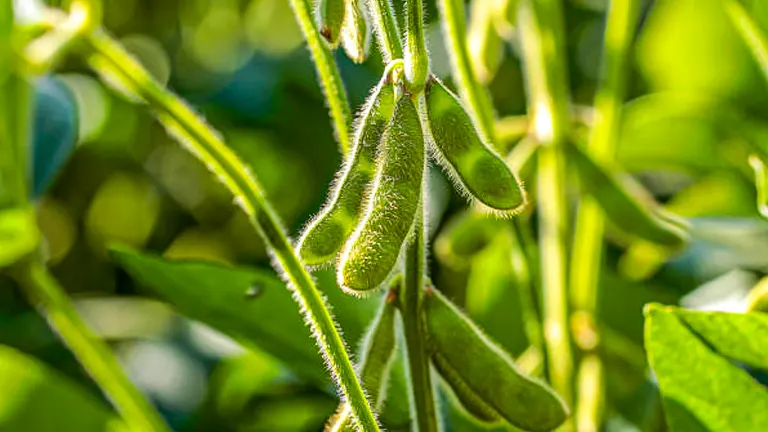
Soybean (Glycine max) is an annual plant in the legume family, renowned for its adaptability to various climatic conditions. Typically reaching heights of 2-3 feet, soybeans prefer temperate climates and flourish in temperatures ranging from 68°F to 95°F (20°C to 35°C). The plants feature trifoliate (three-parted) leaves and bloom with small, delicate flowers varying from white to purple. A mature plant can produce 60 to 80 pods, each containing 2-4 beans. These beans are densely packed with proteins and essential oils, critical for human and animal nutrition.
Key Characteristics
Growth Types:
- Determinate soybeans grow to a fixed height and devote energy primarily to pod development once they reach maturity. This characteristic makes them particularly suitable for mechanical harvesting, as the pods tend to mature simultaneously.
- Indeterminate soybeans continue to grow in height and produce pods throughout the growing season as long as conditions remain favorable. This type often requires more management but can yield multiple harvests in regions with extended warm periods.
Comparison of Determinate and Indeterminate Soybeans
| Aspect | Determinate | Indeterminate |
|---|---|---|
| Growth Pattern | Stops at maturity | Continues growing |
| Harvest Window | Narrow, synchronized | Wider, staggered |
| Ideal Climate | Temperate | Warm, long seasons |
| Management Complexity | Lower | Higher |
| Suited Harvesting Method | Mechanical | Manual or Mechanical |
Uses of Soybeans
Soybeans are extraordinarily versatile, serving numerous functions across various industries:
- Food Products: They are processed into a variety of consumables such as tofu, soy milk, tempeh, and soy sauce, providing essential amino acids comparable to those found in animal proteins.
- Oil Production: Soybean oil is a major product, utilized globally for cooking and in food products due to its mild flavor and high smoke point.
- Animal Feed: High in protein (approximately 40% to 43% protein content), soybeans are a primary component of feed for poultry and swine.
- Industrial Applications: Soybeans are used in the production of biofuels, bioplastics, and other eco-friendly products, highlighting their role in sustainable practices.
Nutritional Profile and Benefits
- Protein Content: On average, 100 grams of soybeans deliver about 36 grams of protein, making them a critical plant-based protein source.
- Fatty Acids: Soybeans contain valuable omega-3 fatty acids, which are beneficial for heart health.
- Isoflavones: The presence of isoflavones in soybeans can have significant health benefits, including reduced risk of heart disease and alleviation of menopausal symptoms.
Pre-Planting Preparation
Soil Requirements
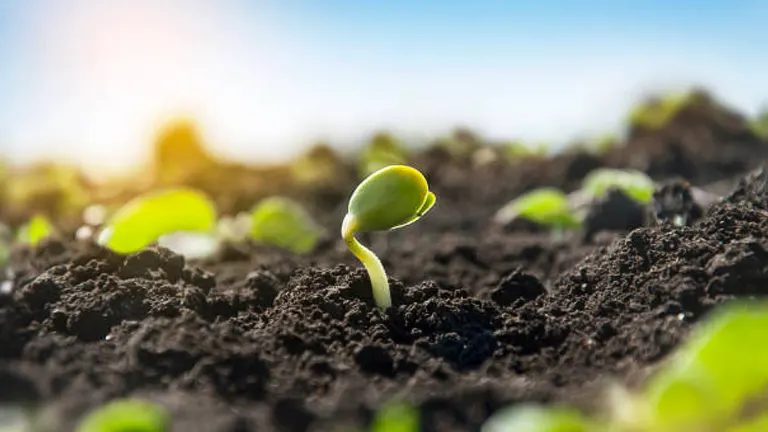
Optimal soil conditions are crucial for the successful cultivation of soybeans. These legumes thrive in well-drained, fertile loam soils with a pH level between 6.0 and 6.8. Before planting, conducting a detailed soil analysis is advisable to assess not only pH but also levels of key nutrients such as nitrogen, phosphorus, potassium, and organic matter content. Amending the soil based on this analysis can significantly enhance nutrient availability and plant health. For example, incorporating organic compost can improve soil structure and fertility, particularly in sandy or clay-heavy soils.
Ideal Soil Composition for Soybeans
| Nutrient | Ideal Concentration |
|---|---|
| Nitrogen (N) | 20-30 ppm |
| Phosphorus (P) | 30-40 ppm |
| Potassium (K) | 120-150 ppm |
| Organic Matter | 3-5% |
| pH Level | 6.0-6.8 |
Climate Considerations
Soybeans require specific climatic conditions to flourish. Full sun exposure and warm temperatures are essential throughout the growing cycle. The ideal planting window is after the last spring frost when soil temperatures consistently exceed 60°F (16°C). Soybeans grow best when daytime temperatures are between 70°F and 95°F (21°C to 35°C), with night temperatures not dropping below 55°F (13°C). These conditions optimize photosynthesis and nutrient uptake, critical for healthy growth and development.
Site Selection
The choice of planting site has a profound impact on the health and yield of soybean crops. Selecting a site that ensures adequate sunlight—minimum of 6 hours of direct sunlight per day—and good soil drainage is crucial to prevent root diseases and ensure robust growth. Additionally, crop rotation is an effective strategy to enhance soil health and reduce the risk of disease. Rotating soybeans with non-legume crops such as corn or wheat helps break pest and disease cycles and improves soil structure and nutrient levels.
Benefits of Crop Rotation:
- Disease Prevention: Reduces the buildup of soybean-specific pathogens in the soil.
- Pest Management: Disrupts the life cycle of common pests associated with continuous soybean cropping.
- Nutrient Management: Helps in balancing soil nutrients, as different crops have varying nutrient demands and contributions.
Planting Soybeans
Choosing Seeds
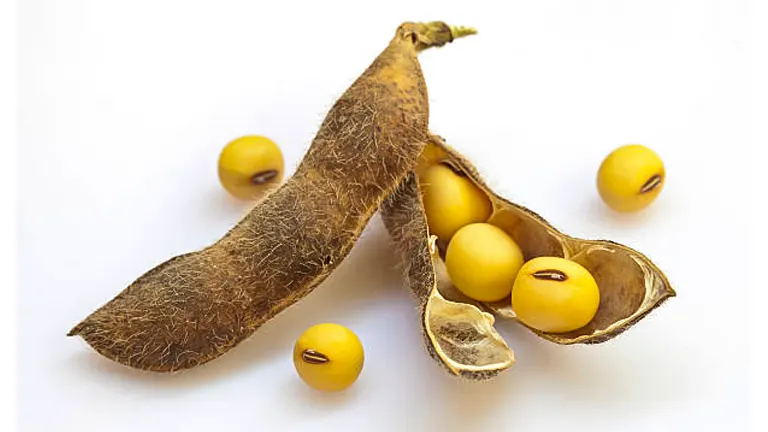
Selecting the right seeds is foundational to a successful soybean crop. Prioritize high-quality, certified seeds from trusted agricultural suppliers to ensure genetic purity and a high germination rate. Look for seeds adapted to your specific climatic conditions and soil type, emphasizing disease-resistant and high-yield varieties. Consider seeds treated with fungicides or insecticides if your area is prone to early pest and disease challenges.
Characteristics of Popular Soybean Varieties
| Variety Name | Maturity Group | Disease Resistance | Yield Potential |
|---|---|---|---|
| Pioneer P24A80X | Group II | High against SCN and RRD | High |
| Asgrow AG03X6 | Group III | Moderate against SCN | Very High |
| Roundup Ready 2X | Group IV | High against fungal diseases | High |
(SCN: Soybean Cyst Nematode, RRD: Root Rot Diseases)
Planting Time
For optimal germination and growth, plant soybeans when soil temperatures consistently exceed 60°F (16°C). This typically occurs from late April to mid-May in most soybean-growing regions. Planting at this time ensures that the seeds can capitalize on the warm spring weather, crucial for early development stages.
Planting Technique

Plant soybean seeds at a depth of 1 to 1.5 inches, adjusting based on soil type and current moisture conditions. In drier and lighter soils, planting up to 2 inches deep may be necessary to ensure moisture contact. Employ a seed drill for even seed placement and depth, which promotes uniform germination and growth across the field.
Impact of Planting Depth on Germination Rate
| Planting Depth (inches) | Germination Rate (%) |
|---|---|
| 1 | 85 |
| 1.5 | 90 |
| 2 | 75 |
Spacing Guidelines
Effective spacing is essential for optimal plant health and productivity. For conventional row-cropping, maintain row widths of 15 to 30 inches, adjusting based on equipment and cultivation practices. Plant-to-plant spacing within the row should be about 2 to 4 inches, depending on the expected growth vigor and the specific variety’s canopy architecture.
Optimizing Light and Air Flow with Proper Spacing
Maintaining proper spacing not only facilitates maximum sunlight capture and utilization but also enhances air circulation around the plants, reducing moisture-related diseases and promoting healthier crop development.
Care and Maintenance
Watering

Proper hydration is essential for soybeans, particularly during the critical growth phases of germination, flowering, and pod-filling. Soybeans typically require about 0.5 to 1 inch of water per week during the early vegetative stage, which should be increased to approximately 1.5 inches per week during peak pod formation and filling. Implementing irrigation practices like drip irrigation or scheduled furrow irrigation can help maintain optimal soil moisture without oversaturating, as soybeans are prone to root diseases if overwatered.
Fertilizing
While soybeans are known for their ability to fix atmospheric nitrogen, supplementing with a balanced fertilizer is beneficial, particularly for phosphorus and potassium, which support root development and pod growth. Fertilizer application should be based on a detailed soil analysis to avoid nitrogen overload, which can promote excessive vegetative growth at the expense of pod production. A typical approach might involve an initial application of phosphorus and potassium at planting, followed by a side-dress application if mid-season deficiencies are observed.
Weed Management
Maintaining control over weed competition is critical for soybeans, especially during the first six weeks after planting when plants are most vulnerable. Starting with a pre-emergent herbicide can effectively prevent weed germination, complemented by periodic mechanical cultivation to handle any breakthrough growth. This strategy helps preserve soil nutrients and moisture for the developing soybean plants, ultimately supporting better yields.
Pest and Disease Control
Regular monitoring and management of pests and diseases are vital for maintaining healthy soybean crops. Integrated Pest Management (IPM) strategies should be employed, which might include the use of biological controls (e.g., natural predators for aphids), targeted chemical treatments for specific threats, and cultural practices such as crop rotation and timely removal of plant residues to reduce pathogen load in the field. Common issues like soybean aphids, bean beetles, rust, and root rot require vigilant observation and timely intervention.
Pruning Techniques
Pruning is generally minimal in soybean cultivation but removing diseased or severely damaged plant parts can be beneficial to prevent the spread of diseases and improve overall plant health. This involves inspecting the plants regularly and cutting away small sections of the plant that show signs of disease or pest damage, ensuring that these actions do not significantly disrupt the plant’s growth and productivity.
Harvesting and Storage
When to Harvest
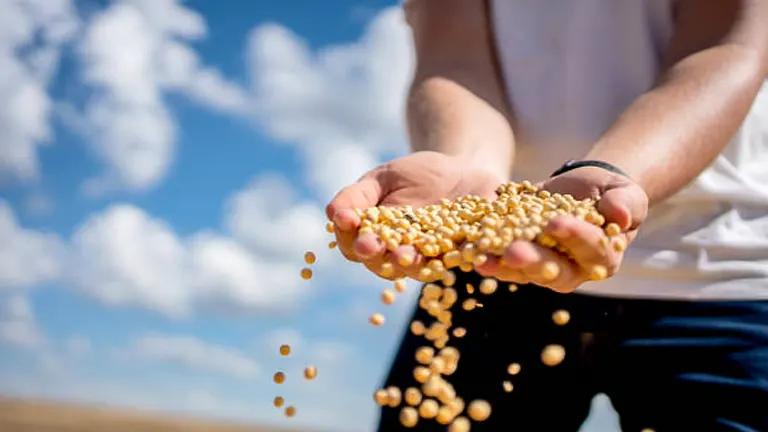
Soybeans are optimally harvested when they reach physiological maturity, which is indicated by the color of the pods turning from green to a yellow-brown, and the moisture content of the seeds is about 13-15%. This stage usually occurs when 95% of the pods have reached their mature color. Timing is critical, as harvesting too early can result in high moisture content and increased drying costs, while harvesting too late can lead to significant losses from shattering and reduced seed quality due to weather exposure.
Harvesting Techniques
For large-scale operations, a combine harvester is the most efficient tool. It is vital to adjust the combine’s settings such as reel speed, fan speed, and the concave clearance to match the specific conditions of the soybean crop, which can vary based on variety and environmental factors. These adjustments help minimize mechanical damage such as cracking or splitting of the beans, which can affect marketability and storage longevity.
For smaller plots or precision harvesting, hand-harvesting may be appropriate. This method allows for careful handling and selection, reducing damage to both plants and beans.
Storage Tips
Proper storage of soybeans is essential to maintain their quality and prevent economic loss due to spoilage or infestation. Store soybeans in a cool, dry place with good ventilation. Ideal storage conditions involve maintaining a temperature around 60°F (15°C) and a humidity level of about 65% to prevent mold growth and insect activity.
Storage Conditions and Their Effects:
| Temperature (°F) | Humidity (%) | Effect on Soybeans |
|---|---|---|
| 60 | 65 | Optimal storage condition, minimizes spoilage |
| >70 | >70 | Increases risk of mold and insect activity |
Using aerated grain bins is highly recommended for commercial storage to help manage moisture levels effectively. Regular monitoring of the stored soybeans is also crucial; inspect for signs of spoilage such as mold or pest infestation, and manage the storage environment accordingly to address any issues that arise.
Troubleshooting Common Problems
Poor Germination
Poor germination can significantly impact the initial development and ultimate yield of soybean crops. Common causes include incorrect planting depth, suboptimal soil temperatures, and high moisture levels. Soybeans typically germinate best when the soil temperature is between 55°F and 60°F (13°C-16°C). Planting at a depth of 1 to 1.5 inches is ideal for most soil types.
Preventive Measures for Germination Issues:
- Seed Treatment: Apply fungicide and insecticide treatments to seeds before planting to protect against soil-borne diseases and early pest attacks.
- Soil Temperature Management: Use soil warming techniques or delay planting until optimal soil temperatures are reached.
Plant Diseases
Soybeans are vulnerable to various diseases that can deteriorate plant health and reduce productivity. Common diseases include powdery mildew, leaf blight, and soybean rust. Each disease requires specific management strategies:
Management Strategies for Common Soybean Diseases:
- Crop Rotation: Rotate with non-leguminous crops to break the life cycle of pathogens.
- Resistant Varieties: Choose varieties with genetic resistance to prevalent diseases.
- Fungicide Application: Apply fungicides as preventive or early treatment measures based on extension service recommendations and weather conditions conducive to disease development.
Insect Infestations
Insect pests can cause substantial damage to soybeans, reducing both quality and yield. The soybean aphid and bean beetle are particularly detrimental:
- Scouting: Regular field inspections should be conducted at least weekly during the growing season to detect early signs of infestation.
- Biological Control: Introduce beneficial insects like ladybugs and lacewings, which are natural predators of aphids.
- Chemical Control: Employ targeted insecticides as a last resort, considering economic thresholds to justify application costs.
Nutrient Deficiencies
Nutrient imbalances can manifest as yellowing leaves, stunted growth, or poor pod development. Conducting a soil test before planting and another during the growing season can help identify specific deficiencies:
Correcting Nutrient Deficiencies:
- Balanced Fertilization: Based on soil test results, apply a balanced fertilizer that meets the specific needs of the crop. Phosphorus and potassium are particularly critical for root development and overall vigor.
- Foliar Feeds: If deficiencies are identified during the growing season, foliar applications of the deficient nutrients can be an effective way to supplement plants.
Related Post
- How to Fertilize Bougainvillea: A Complete Guide for Stunning Blooms
- How to Fertilize Apple Trees: Essential Tips for a Bountiful Harvest
- How to Fertilize Lemon Trees: Secrets for Thriving Citrus
- How to Fertilize Avocado Tree: A Step-by-Step Guide for Lush Growth
Conclusion
Growing soybeans can be a rewarding endeavor, provided you follow the expert tips and techniques outlined in this guide. From selecting the right seeds and preparing the soil to managing pests and harvesting your crop, each step is crucial to achieving a luxurious growth and a bountiful harvest. Remember, patience and attentiveness are your best tools in cultivating any crop, soybeans included.
FAQs
- What is the best time of year to plant soybeans?
Plant soybeans in the spring after the last frost has passed and when the soil temperature is consistently above 60°F (16°C). This typically occurs between late April and June, depending on your geographic location. - How deep should soybean seeds be planted?
Soybean seeds should be planted about 1 to 1.5 inches deep. In lighter, sandier soils or during dry conditions, planting slightly deeper can help ensure the seeds have adequate moisture. - Can soybeans be grown in any type of soil?
Soybeans grow best in well-drained, fertile loam soils with a pH level between 6.0 and 6.8. They can tolerate a range of soil types, but poor drainage or heavy clay soils can hinder their growth. - How often should I water my soybean plants?
Water soybeans thoroughly once a week, providing about an inch of water each time. During periods of drought or extremely hot weather, increase watering frequency to prevent stress. - Do I need to fertilize my soybean plants?
While soybeans fix their nitrogen, they benefit from a starter fertilizer at planting, particularly one low in nitrogen but high in phosphorus and potassium. Additional fertilization should be based on soil test results. - What common pests should I watch for when growing soybeans?
Keep an eye out for soybean aphids, Japanese beetles, and spider mites. Implementing integrated pest management practices like using natural predators and timely application of pesticides can help control these pests. - When is the right time to harvest soybeans?
Harvest soybeans when the pods are fully mature and the leaves begin to yellow and fall off. The beans inside should feel firm and the pods should have a slight dryness to them. - How should I store harvested soybeans to maintain their quality?
Store soybeans in a cool, dry place. Use airtight containers or silos with good aeration to avoid moisture buildup, which can lead to mold and spoilage. Regular checks for pest infestation and spoilage are also recommended.
Thank you for joining us on this journey through the essentials of soybean cultivation. Armed with these expert tips, you’re now ready to nurture your soybean crops towards luxurious growth and abundant harvests. Happy farming!

Benjamin Brooks
Forestry AuthorGreetings! I'm Benjamin Brooks, and my journey over the past 15 years has revolved around the fascinating realms of content creation, expertise in snow clearing, and the intricate world of lumberjacking and landscaping. What began as a simple curiosity about the natural world and heavy machinery has evolved into a passionate profession where my love for crafting words intertwines seamlessly with my lumberjacking and garden skills.









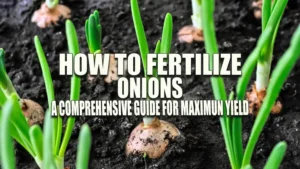



Leave your comment